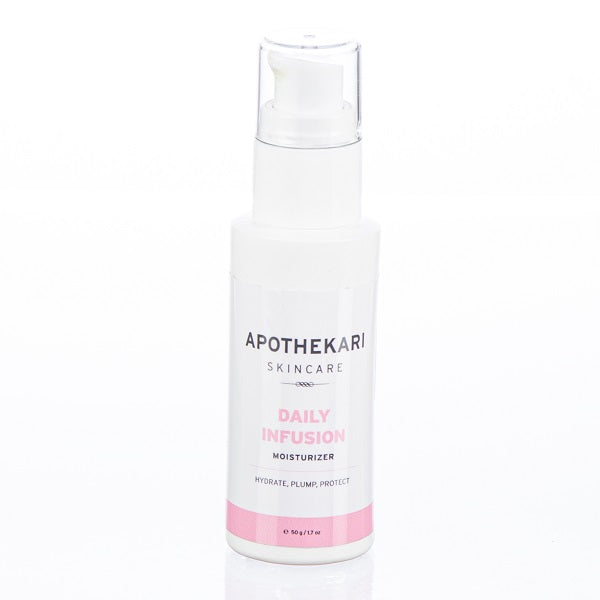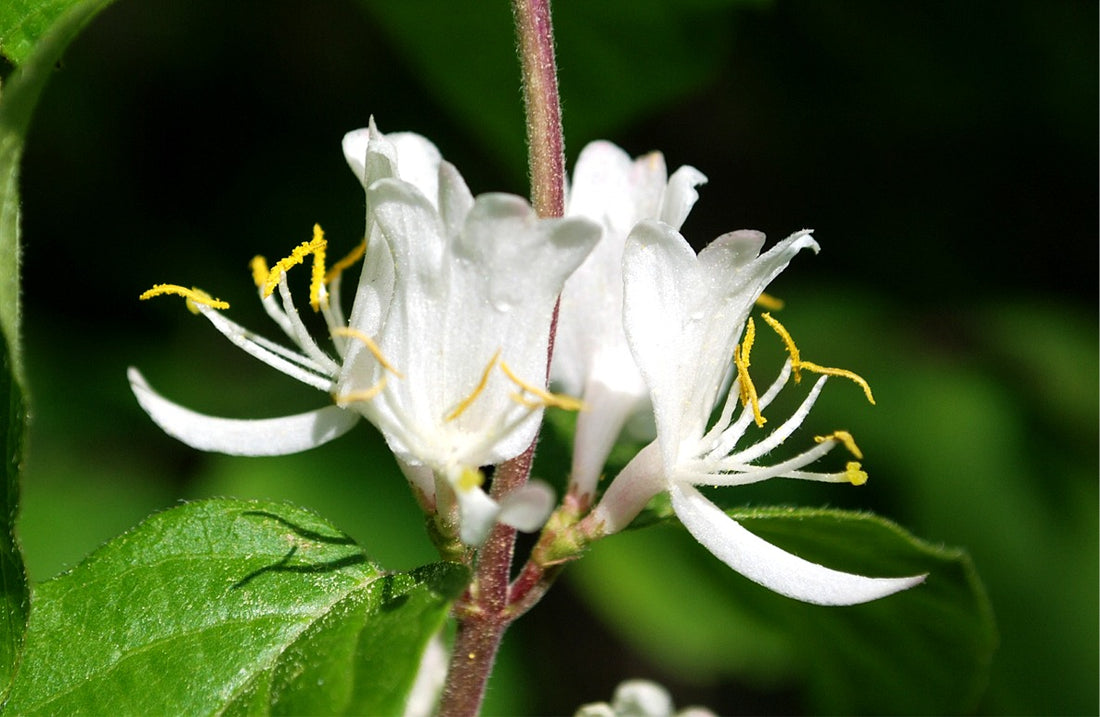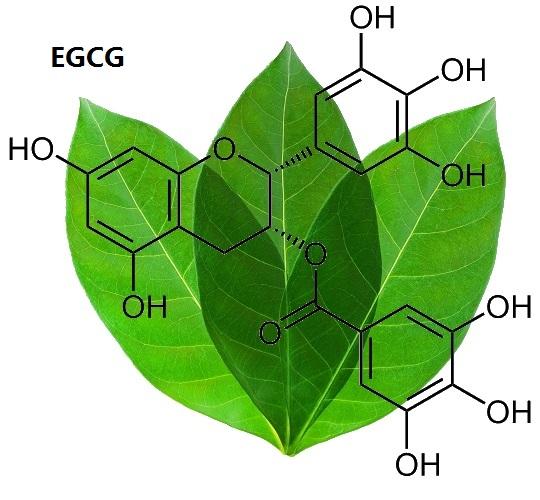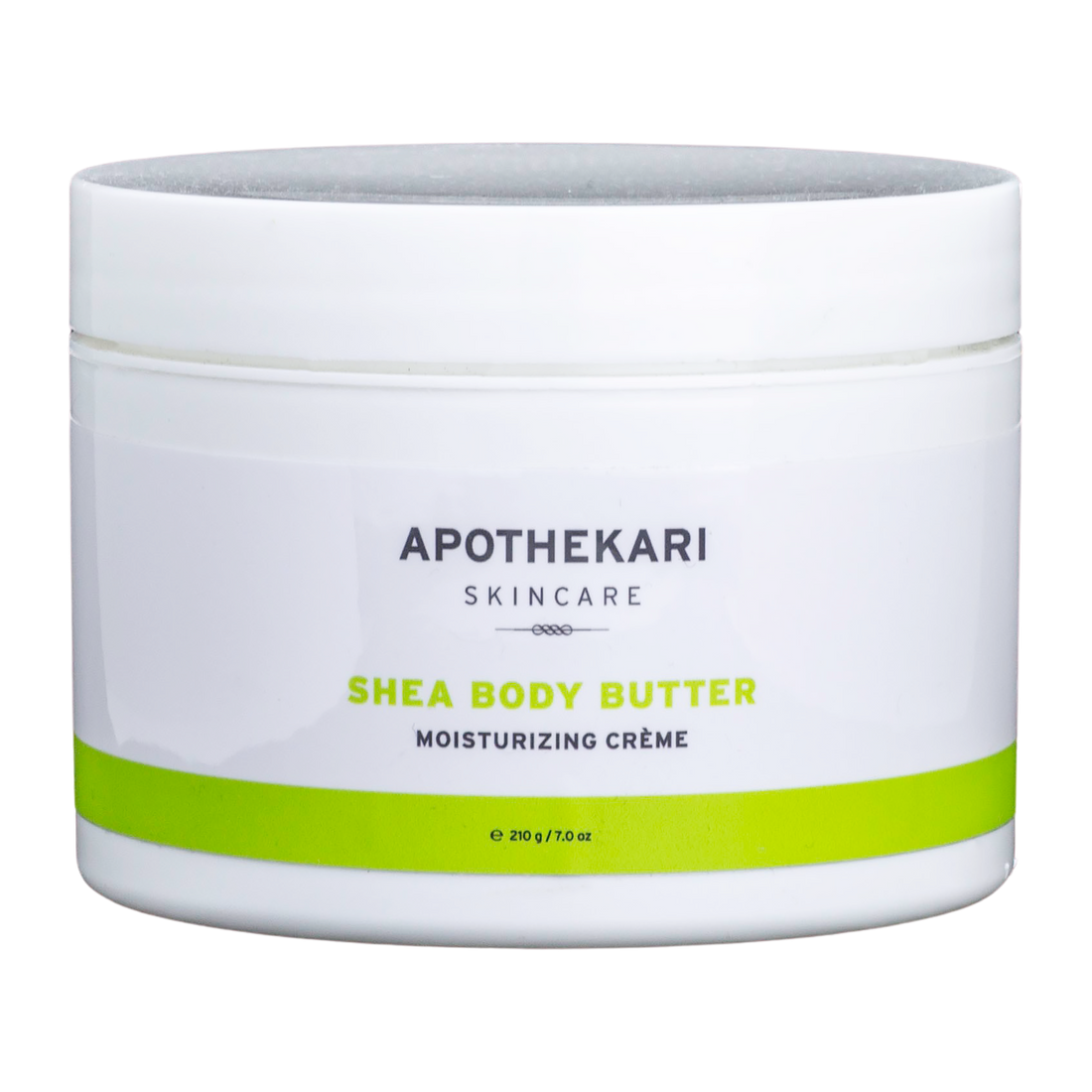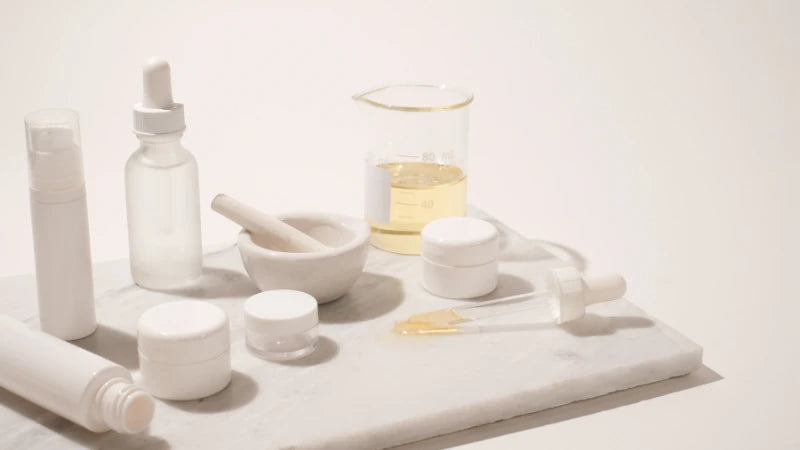Blog
Here's How to Treat Dry Skin as You Get Older
Here’s how to treat dry skin, an inevitable skin change that comes with aging. In this post, learn about ingredients and tips that will lead to softer, smoother and more touchable skin. At Apothekari, our moisturizers are one of the best ways to manage dryness from head to toe. Shop Moisturizers Why Causes Dry Skin As You Get Older? Your skin ages in two main ways: 1. Extrinsic Aging Extrinsic aging is related to the impact of the environment on your skin. This includes exposure to the sun, pollution and smoke, plus diet and lifestyle factors. Stress, sleep, exercise all contribute to extrinsic aging. Together, they can lead to skin thickening, freckles, age spots and some precancerous changes such as actinic keratosis and skin cancers themselves. The sun’s UV rays damages collagen, elastin and other elements that lead to skin that sags, stretches, and loses its ability to snap back after stretching. Mature skin may also become drier, bruise and tear more easily, and take longer to heal. 2. Intrinsic Aging Intrinsic aging is something that we can’t fight against and which occurs as part of the natural aging process: Thinning of the dermal and epidermal skin layers, resulting in a smaller supply of nutrients to the cells A decline in the production of new skin cells and skin supportive fibers (collagen, elastin, etc) A decreased ability to retain moisture A decline in levels of the hormone, estrogen. Estrogen not only stimulates oil glands, which helps keep skin hydrated, it also helps to maintain the skin’s structure. Dryness affects the skin on all of your body. This includes your face, arms and legs, plus parts of your body, you may not have considered, like your vulva and vagina. More Than Lip Service Vulvar and Vaginal Moisturizer offers fast, hormone-relief for when you experience dryness down there. What is the Best Natural Ingredient for Dry Skin? Whether skin is mature or younger, a good moisturizer is key to help treat dry skin. Moisturizers work by either providing hydration, or by helping to prevent its loss, and they contain 3 main classes of ingredients: Humectants: Help to attract moisture to the skin. Glycerin, hyaluronic acid, urea and aloe vera are humectants. Emollients: Smooth and soften skin by helping to repair cracks in the skin barrier. They prevent moisture loss. Butters, oils, esters, lipids, and fatty acids are all considered emollients. Occlusives: Work by forming a protective coating on your skin’s surface, forming a protective barrier that locks moisture in and keeps harmful particles out. They tend to be oily or waxy. Petrolatum, lanolin, beeswax, jojoba oil, and olive oil are examples. Occlusives like oils, can also be emollients. Each class of ingredient provides benefits of its own, and they’re often combined together for the best results. For best results apply them to slightly damp skin to help lock in the moisture. What is the Best Thing for Dry Skin | Top Tips Using moisturizer is an essential step in dry skin management, but there are many lifestyle changes that you can implement to help as well: Introduce Humidity. The drier the air, the drier the skin. It’s a lesson, I re-learn every time I travel to the desert-like climate in Arizona. Consider using a humidifier in the room where you spend the most time, which, for many of us, is the bedroom. Change Up Your Diet. Increasing your intake of foods rich in omega-3 fatty acids has been shown to help improve the skin’s oil production, improve hydration and minimize the signs of aging. Look for them in nuts (walnuts are a rich source), olive oil, avocados and salmon. Watch Your Alcohol Consumption. Ah yes, a glass of red wine on a Friday evening is very appealing. We’re not telling you to give it up completely, but alcohol, along with caffeine, act as diuretics that can lead to dehydration and drier skin. Up the water intake to help counteract the effect if you can. Exfoliate. No matter how much you moisturize, dry skin will stay dry without some light exfoliation. For the face, check out our AHA-Mazing Clean Cleansing Gel and our Bespoke Vitamin C Serum, which hydrates and exfoliates as well. Cleanse Gently. Harsh cleansers can strip away skin’s protective natural oils. Choose one that is gentle—the one we’ve linked to above is gentle, yet also effective. Add In An Oil. If you’re already using a moisturizer and skin is still dry, consider adding in an oil. These help to lock in the moisture delivered by a moisturizing cream or lotion, relieving dryness even further. Our Antioxidant Face Oil is a boon to drier skin on the face while our Lemon Rose Body Oil offers luxurious hydration post shower or bath. Water—but, don’t make it hot! Hot water strips away skin’s protective oils. Switch to lukewarm and stay away from hot water when you shower, bathe or wash.
Learn moreA Light Face Moisturizer for Warmer Weather
If you’re looking for a face moisturizer for warmer weather, Apothekari Daily Infusion Moisturizer may be just what you’re looking for. In this post we’re discussing tips to help you find one that’s just right for your skin. Want information about moisturizers in general? Check out this post we wrote earlier. Shop Daily Infusion Moisturizer A face moisturizer is a product that we apply to skin to relieve dryness and make it feel more comfortable. They can range from lighter serums and lotions to heavier and thicker treatments such as petroleum jelly (although this isn’t something we’d recommend!). Water qualifies as a moisturizer, but because it evaporates quite quickly, it’s not very effective on its own. The ideal face moisturizer falls somewhere in between water and petroleum jelly and many customers find that a product like Apothekari Daily Infusion Moisturizer works perfectly for them all year round because it moisturizes without leaving skin feeling greasy. It’s also suitable for all skin types. Moisturizer Ingredients Moisturizers are made up of three main types of ingredients: Humectants. Deliver moisture to skin by either grabbing it from the environment or pulling it from the skin’s deeper layers (dermis) to its surface layers (epidermis). Hyaluronic acid (sodium hyaluronate), glycerin, propanediol, honey and propylene glycol are all examples. Emollients. Soften and smooth skin by filling in the gaps. May also lock in moisture. Fats and oils like vitamin E, cholesterol, jojoba oil and some silicones are emollients. Emollients may also have occlusive action. Occlusives. Work by forming a thin, oily layer over skin, helping to lock in moisture. They should be applied over damp skin, ideally. Lanolin, beeswax, petroleum jelly and fatty alcohols like cetyl alcohol and stearyl alcohol are occlusive. Some occlusives may also have emollient activity. The combination and amounts of each ingredient influence how light or heavy a moisturizer feels. A Face Moisturizer for Warmer Weather Humidity (the amount of moisture in the air) changes depending on where you live or the season. Tropical locations and summer often bring higher humidity while winter and desert or cooler climates tend to be drier. A heavy moisturizer (one with more emollient and occlusive ingredients) that was perfect for cooler winter temperatures may feel too heavy now. If you find that your skin is left feeling greasy or oily now that it’s warmer outside, it may be time to revisit the moisturizer you’re using. Opt for one that contains fewer occlusive ingredients and that contains more humectant ingredients. Our Daily Infusion Moisturizer has a good balance of humectants (glycerin), light emollients (caprylic/capric triglyceride, coco-caprylate/caprate, squalane) and occlusives (cetearyl alcohol, cetearyl glucoside, glyceryl stearate) to deliver light moisture that all skin loves. We refer to it as the ‘Goldilocks of Moisturizers’ because most of our customers feel it’s just right! Tips: In order to maximize the effectiveness of your moisturizer, keep the following in mind: Apply over damp skin to lock in moisture. Moisturize as often as you need to. Don’t forget sunscreen to help protect skin against damage from UV rays. Now you and your face are ready for summer!
Learn more5 Questions to Ask Before You Choose a Moisturizer
If you’re wondering how to choose a moisturizer that’s right for you, you’re not alone. Moisturizers seem to be the number one requested product when we feel that something is wrong with our skin and in an earlier post I questioned whether or not you even need one. If you do, there are 5 questions to ask before you choose a moisturizer. Shop Daily Infusion Moisturizer What is a Moisturizer? Moisturizer is a broad term used to describe products that we use to make our skin feel more comfortable and lubricated (not dry). They range from very light products like serums and lotions to heavier and more occlusive ones like petroleum jelly. Water itself can moisturize skin but it evaporates very quickly. On the other end of the spectrum, petroleum jelly also moisturizes, but it is sticky and greasy unpleasant to use on a regular basis. An ideal moisturizer for most of us falls somewhere in between the two, containing some water with a heavier, occlusive substance to help lock it all in. Moisturizers are made up of 3 main types ingredients: Humectants. Attract water to the skin by grabbing it from the environment. Can also pull water from deep in the skin (dermis) to the surface layers (epidermis). Examples include honey, propylene glycol, propanediol, hyaluronic acid (sodium hyaluronate), glycerin, ethylene glycol. Emollients. Help to fill in the gaps in skin leaving it feeling softer and smoother. They may also help to lock in moisture. Includes lipids (fats) and oils such as jojoba oil, castor oil, vitamin E and cholesterol and some silicones as well. Emollients may also work as occlusives. Occlusives. Help to lock in water by forming a thin, oily layer over the skin. They work best when applied to damp skin. Examples include petroleum jelly, lanolin, mineral oil, silicones, beeswax, cholesterol and fatty alcohols including cetyl alcohol and stearyl alcohol. Many occlusives are also emollients. We’re big fans of Apothekari Daily Infusion Moisturizer , which contains a good balance of humectants (glycerin), emollients (caprylic/capric triglyceride, coco-caprylate/caprate, squalane) and occlusives (cetearyl alcohol, cetearyl glucoside, glyceryl stearate) and which is suitable for all skin types. How To Choose a Moisturizer Your choice of moisturizer depends on your skin type and the time of year. You may not require a moisturizer during the summer months, when traveling to tropical locations or when the humidity is high. However, when you travel away from home, the weather changes and/or the humidity drops, you may need to reassess your routine. Skin changes due to a number of factors so a routine that always used to work for you may need to be revisited every now and again. Here are 5 questions to ask before you choose a moisturizer that is best for your skin. What is Your Skin Type? Dry skin requires a moisturizer with more emollients and occlusive ingredients to help block water evaporation. Oily skin often does well with water-based products containing a lot of humectants (like a hyaluronic acid serum) or may be able to forgo a moisturizer altogether. Is Your Skin Dry or Dehydrated? Dry skin is skin that is lacking in oils while dehydrated skin is skin that it is lacking in water. Dry skin feels rough and appears dry and flaky. Dehydrated skin looks dull and feels tight and rough. It may show fine lines, sagging and wrinkles. Both oily and dry skin can be dehydrated, meaning that it is lacking in water or moisture. Dehydrated skin benefits from humectants to help hydrate and plump. Ingredients including glycerin, sodium hyaluronate and propanediol work well. What Time of Year is it? If temperatures have dropped and the air is drier (like now) or if you’ve traveled somewhere where that’s the case, you may need to introduce a moisturizer if you aren’t currently using one. Or, you may need to switch to one that contains more emollient and occlusive ingredients. Conversely, if it’s getting warmer and there’s more moisture in the air, you may need to swap out your heavier moisturizer for one that is lighter (more humectants and fewer emollient or occlusives). If you’re spending more time outdoors, consider that the sun’s UVA rays can lead to dehydrated skin so ensure that you are wearing a sunscreen and consider upping the moisturizer. Has Your Skin Experienced Age Related Changes? Our skin may become oilier as we enter adolescence. As we approach our twenties, it becomes drier. The hormonal changes that women experience as they age can lead to further dryness so it’s important to acknowledge that you may require a different moisturizer as you get older. What Type of Moisturizer Do You Like? Sometimes finding the right product can take a bit of trial and error. If you’re not happy with how your moisturizer feels on your skin, it may not be a good match. Shop around and test products until you find one that you enjoy using. Once you’ve found a moisturizer that works for you, keep the following in mind: Apply over damp skin to lock in moisture. Moisturize as often as you need to. Use SPF daily to help combat dryness and skin damage. Did this post help you with how to choose a moisturizer?
Learn moreBenefits of Green Tea EGCG: New Study
It’s well known that green tea, and more specifically, one of its active components, EGCG (Epigallocatechin-3-gallate) delivers a myriad of benefits to skin. Green Tea Skin Benefits Green tea itself contains polyphenols, high antioxidant nutrients which help to protect the skin against free radical damage. Studies have shown that it also: Protects against the development of skin cancer Reduces sebum production, thereby minimizing the development of acne Minimizes rosacea Slows down the skin aging process. New Study on EGCG in Green Tea A study recently published in the International Journal of Molecular Sciences, points to new skin care benefits attributed to EGCG. According to the article, the benefits extended beyond that of its antioxidant and inflammatory properties and showed that it contributed to an increase in skin hydration. The authors examined EGCG’s effect on hyaluronic acid synthase (HAS) and hyaluronidase (HYAL) gene expression, as well as antioxidant and anti-pigmentation properties. Benefits of EGCG for Skin Care EGCG was shown to increase the expression of skin’s natural moisturizing factor-related genes, among other activities. In addition, its antioxidant activity helped to prevent radical-evoked apoptosis (cell death) and it reduced melanin secretion. The study results suggest that EGCG could be used as a cosmetic ingredient for skin hydration, moisture retention and the prevention of wrinkle formation. Our customers are on to something as they already rave about the results they are seeing upon using our Bespoke Vitamin C Serum (which contains green tea extract along with L-ascorbic acid and other skin beneficial ingredients). Given these latest results, it’s not surprising at all!
Learn moreShea Butter : Skin Care
Shea butter, also known by its Latin name, Butyrospermum parkii, comes from the karite tree in Africa. Shea fruit are picked from the tree to yield a nutritious pulp that surrounds a large, oil-rich seed from which shea butter is extracted. Historically used for cooking, hair and skin care, this plant lipid is added to cosmetics for its emollient and smoothing properties. Shea butter has a rich, non-greasy texture and is quickly absorbed because its melting point matches that of our body temperature. It is yellow in colour when raw and becomes ivory or white in colour upon refinement. It is a rich source of antioxidants including vitamins a and e, quercetin, epicatechin gallate, gallocatechin, epigallocatechin, as well as skin-replenishing fatty acids including stearic, oleic and linoleic. It also contains cinnamic acid, which has anti-inflammatory properties and the ability to absorb UVB rays between 290 to 320 nm, giving it some limited capacity as a sun filtering agent. Find shea butter in skin-and hair-related products such as lip glosses, moisturizers, and hair conditioners for dry and brittle hair. It’s also used by soap makers and is an excellent ingredient for individuals who suffer from dry skin conditions. Medicinally, it is sometimes used as a base for ointments. Some of the isolated chemical constituents are reported to have anti-inflammatory, emollient, and humectant properties. Shea butter is a key ingredient in Apothekari Shea Body Butter, where it is enhanced with healing herbs, fresh oils, natural vegetarian waxes and an intoxicating blend of essential oils to heal dry, cracked and callused skin.
Learn moreWhy Squalane Is Good for Your Skin
Squalane is an oil naturally occurring in the skin’s sebum and is also essential in the synthesis of cholesterol, steroids, and Vitamin D in our bodies. About 10 – 12% of our skin surface is made of squalene but production declines as we age and by age 50, our skin is thought to contain only 5%. Traditionally sourced from shark livers (where the compound squalene is converted to squalane to make it more stable), squalene is now (happily) sourced primarily from olive oil and sugar cane and converted to the more stable squalane for use in cosmetics. Shop Daily Infusion Moisturizer What Does Squalane Do for Your Skin? Squalane lubricates and protects and is widely used as a conditioner, emollient and carrier oil. Because it’s naturally found in skin, our bodies love it. It helps prevent UV damage, helps to regenerate cells and has antibacterial properties. While you can use it straight up, you can also find this ingredient in a range of products including emulsions, balms, facial serums and massage oils, or as a carrier for essential oils. It absorbs quickly, boosting the skin’s ability to retain moisture making it ideal for even really dry and chapped skin. It also enhances the skin’s natural barrier function, warding off external damage. And, it does this without clogging pores. Daily Infusion Moisturizer Beyond being an excellent moisturizing ingredient, squalane has been shown to possess antioxidant properties, helping to protect skin against free radical damage. I love this ingredient because it does so much! You can find squalane in our Daily Infusion Moisturizer where it’s combined with Fructooligosaccharides (naturally occurring sugars) and Caprylic/Capric Triglyceride to deliver hydration without any hint of oiliness. It’s a firm customer favourite at Apothekari!
Learn more


